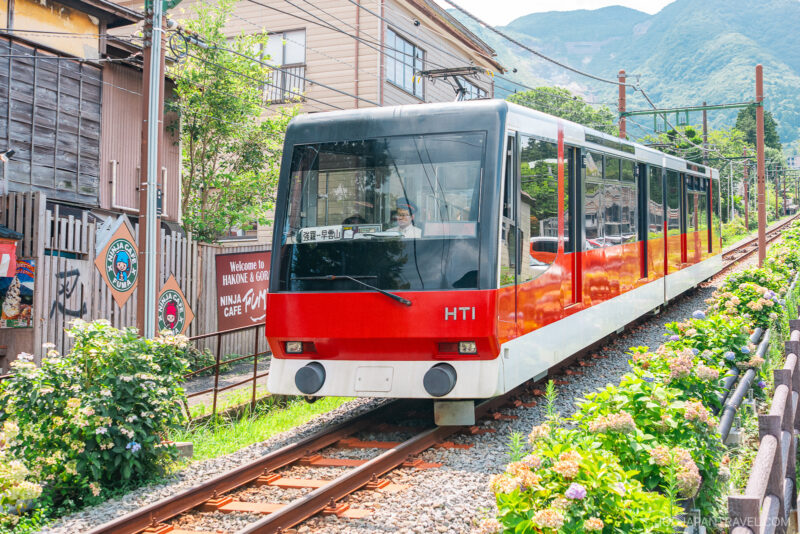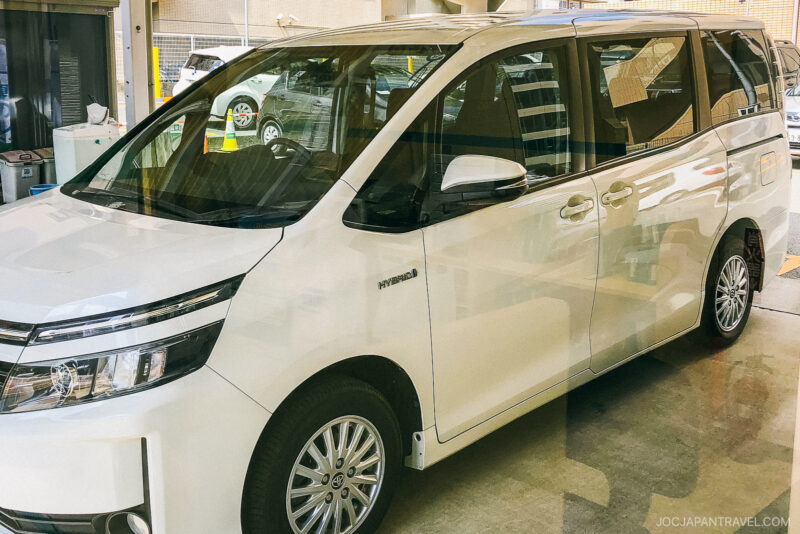This post may contain affiliate links. Please read our disclosure policy.
Traveling to Japan for the first time can feel overwhelming, but with the right tips you’ll spend less time worrying and more time enjoying the experience.

1. Choose the Right Season
Japan has four distinct seasons, each with its own appeal. Spring (mid-March to mid-April) brings cherry blossoms and big crowds. Fall (late October to early December) offers cooler weather, colorful foliage, and seasonal foods like chestnuts and sweet potatoes. Summer is festival season but also hot and humid. Winter is best for skiing and relaxing in hot springs.
2. Expect Lots of Walking

Cities are designed for walking, and even train stations have plenty of stairs. We often logged 17,000 to 20,000 steps in a single day. Comfortable shoes are essential, and breaks are important if you’re traveling with kids or grandparents.
On the bright side, all that walking means you can enjoy more food guilt-free—think of it as carbo-loading for sushi and ramen!
3. Pack Light
Many hotels and inns have narrow halls and limited storage. Oversized suitcases are hard to manage and may not fit in taxis. Essentials are easy to buy at convenience stores, so resist overpacking.
We typically pack a week’s clothing in a carry-on and do laundry once a week. Many hotels have laundry facilities, and there are also coin laundries all over.
4. Follow Photography Etiquette
Always check signs before taking photos at temples and shrines. Some areas forbid photography inside. Be mindful when photographing people and avoid selfie sticks in crowded spaces.
5. Don’t Hesitate to Ask for Help
Locals are often happy to give directions or advice. Many people in cities know basic English. A polite “sumimasen” (excuse me) goes a long way.
6. Be On Time for Trains

Japanese trains leave exactly on schedule, and they will not wait. Arrive early, especially during rush hour when stations are crowded and confusing to navigate.
7. Visit Landmarks Early or Late
Famous attractions fill up quickly with tour groups. Arriving first thing in the morning or just before closing makes the visit far more enjoyable.
8. Know Where to Find Restrooms
Public restrooms are usually clean and easy to find in train stations, department stores, and parks. Even bullet trains have onboard facilities.
9. Stay at a Ryokan or Temple

Ryokans offer tatami rooms, onsen baths, and traditional meals. Some Buddhist temples allow overnight stays with vegetarian food and morning prayers. Both give a deeper cultural experience.
10. Book Tickets in Advance
Popular spots like the Ghibli Museum and Tokyo Disney often sell out weeks ahead. Check official websites early and secure tickets before your trip.
11. Use an IC Card
Suica and Pasmo cards work on most trains, buses, and even vending machines. If you have an iPhone, add Suica to your Apple Pay. If you have an Android phone, get a Welcome Suica Card.
12. Learn a Few Phrases

Simple words like “arigatou” (thank you) and “sumimasen” (excuse me) are useful every day. Learning numbers 1–10 helps with shopping and dining.
13. Navigate with Google Maps
Google Maps is accurate for transit routes, exits, and even floor levels in malls and buildings. We relied on it constantly. Just keep in mind the GPS does get confused sometimes, so you can use a nearby landmark, such as a 7-11 or store, to orient yourself if the GPS is not working right.
14. Be Courteous in Public
If you need to check your phone, step aside to avoid blocking foot traffic. Smooth movement is valued in crowded places.
15. Embrace Convenience Stores
Conbini like 7-Eleven, Lawson, and FamilyMart sell tasty and affordable meals. Try onigiri (Japanese rice balls), bento boxes, sandwiches, and seasonal snacks.
16. Don’t Eat While Walking

It’s considered poor manners to eat on the go. Finish your food near the shop before continuing. Most shops that sells food will have a small area for customers to finish their food.
17. Carry a Coin Pouch
Cash is still common. You’ll collect many coins in daily transactions, so a small pouch keeps them organized and easy to use.
Final Thoughts
Traveling in Japan is smoother when you understand a few cultural details ahead of time. From being punctual for trains to trying meals from a convenience store, these small adjustments help you experience daily life with more confidence and respect. With thoughtful planning, your first trip will be filled with memorable moments.
Questions or thoughts? Share them in the comments. We love hearing from you!


